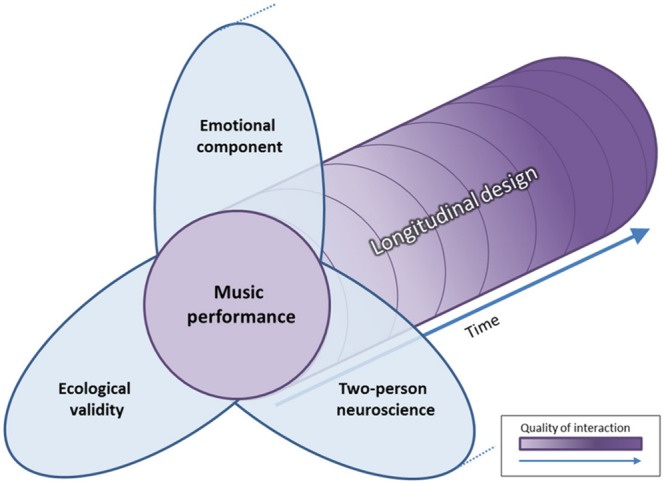FIGURE 4.

Benefits of music performance over time as an experimental design for social interaction in neuroscience. Three fundamental characteristics have been advised by authors in social neurosciences when it comes to studying social interactions. First, ecological validity assume that stimuli and experimental environment must mirrors as closely as possible real life. Second, the emotional component has been found to be a catalyst for social interaction and promotes brain coupling. Thirdly, the two-person neuroscience promotes an enactive view of human interaction rather than the observation paradigm, standard in classical neuroscience. At the crossroad of these three notions stands music performance. We argue that with the use of longitudinal design and the appropriate neuroimaging modality, it would be possible to describe the steps in building a musical relationship across several dimensions (e.g., behavioral, emotional, and neuronal). Hence, the quality of human interaction in these dimensions may improve (e.g., better performance, feeling of togetherness, and change in neural network) over time.
